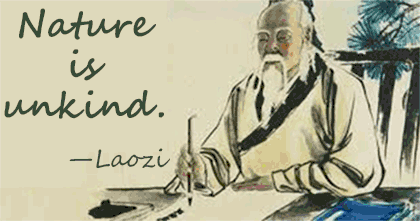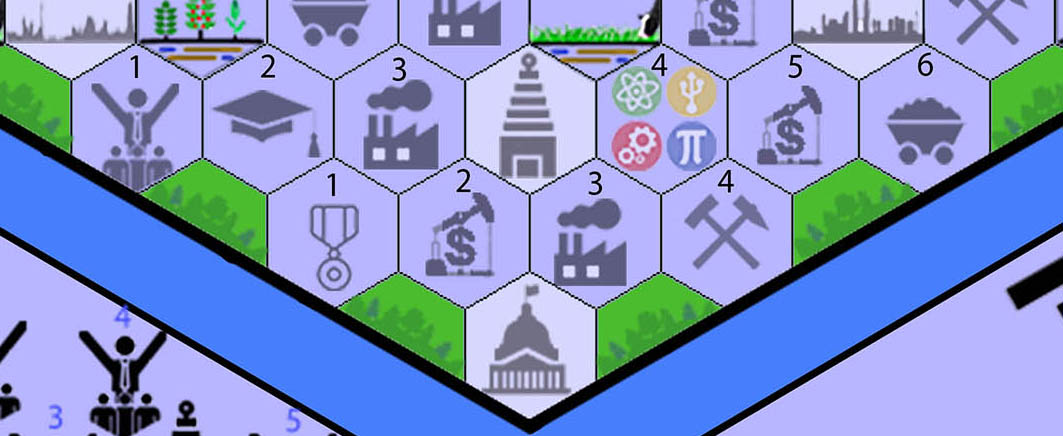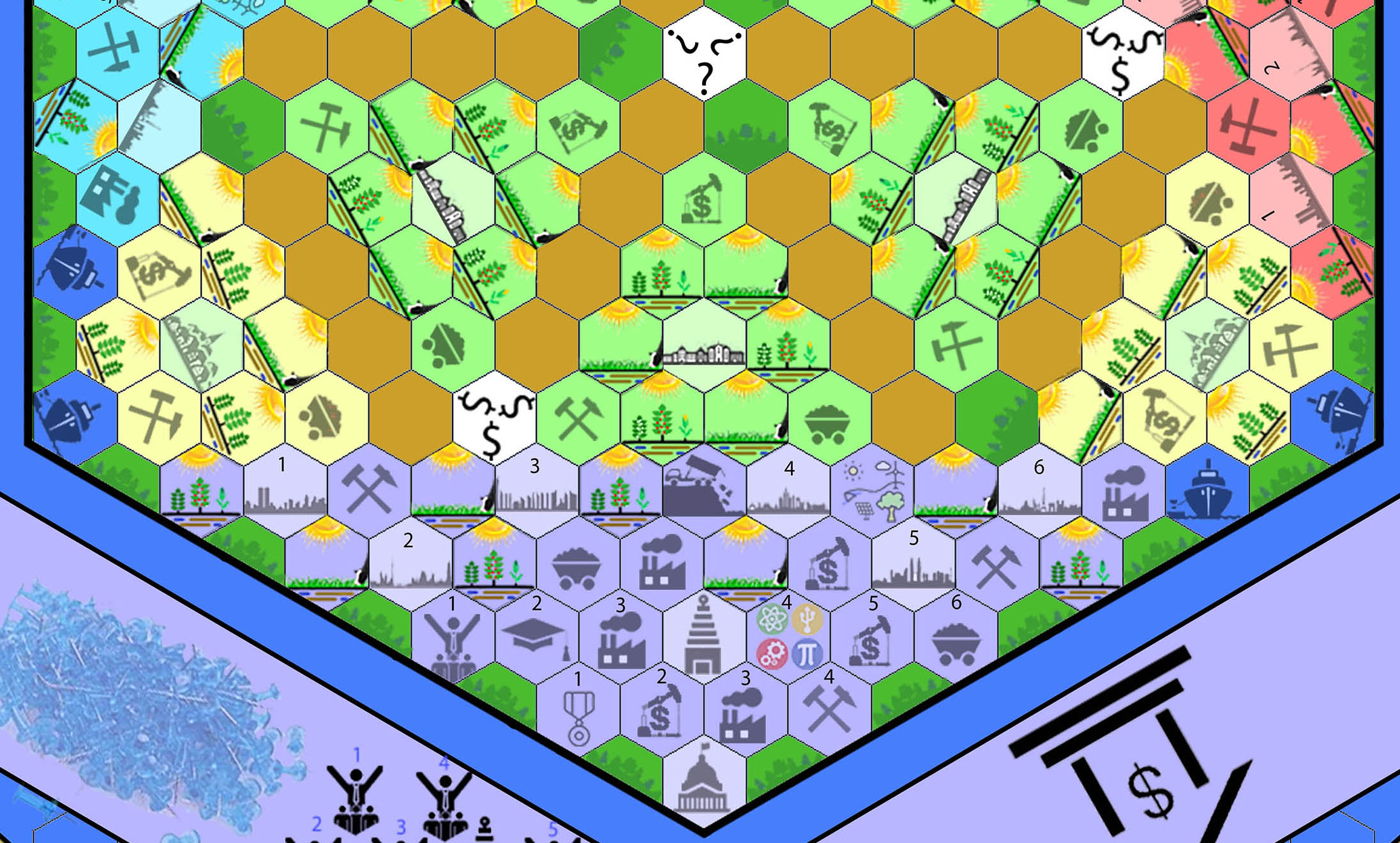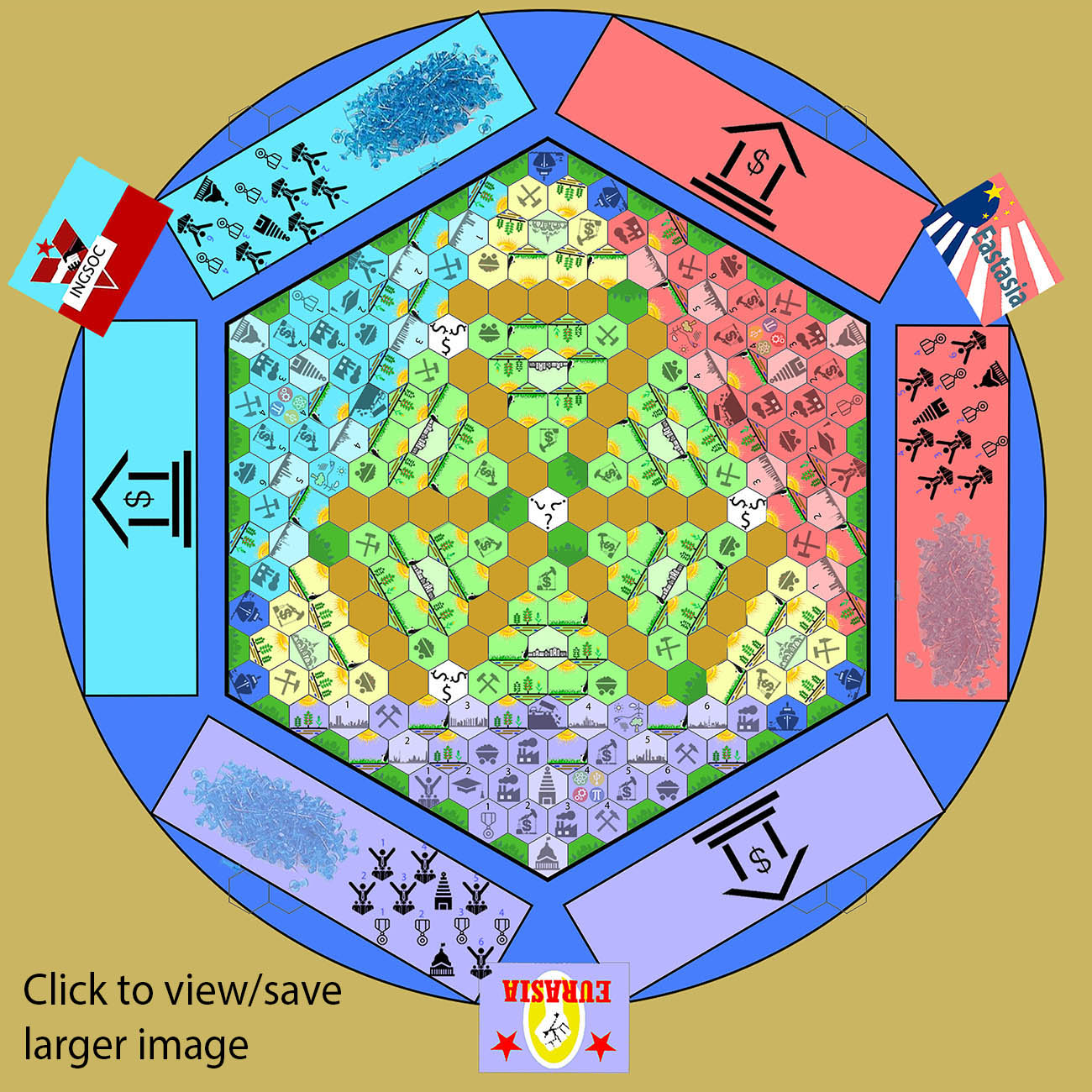
SUNDAY, NOV 8, 2020: NOTE TO FILE

Rules of the Game of Empire
An open source project
'For the first time in history a conviction has developed among those who can actually think more than a decade ahead that we are playing a global endgame. Humanity's grasp on the planet is not strong. It is growing weaker. Our population is too large....' — Edward O. Wilson, Half Earth: Our Planet's Fight for Life 2016
Eric Lee, A-SOCIATED PRESS
TOPICS: GLOBAL EMPIRE, FROM THE WIRES, RULES OF THE GAME OF EMPIRE
Abstract: Can a board game help educate humanity to understand our predicament, the fine mess we are in? What if a board game, one that simplistically models the empire-building we are all products of and serve, as Monopoly models a capitalist economy, could simulate over the course of minutes a dynamic that is unfolding over the course of centuries that humans are energy, time, and posterity blind to? If more BAU (business-as-usual) offers zero chance of saving humanity from its dynamic, and playing a board game has a fraction of one percent chance of helping 'to save the world' as we may wish to persist in, then maybe diverting as much time and effort (expense) to promoting the Game of Empire, as is spent on beer in the USA per year, merits consideration.
Coos Bay (A-P) — The particulars of the game, intended to model empire building, are under development. The goal is to iterate towards perfection. Humans who may have information of value, better views, need to stand and deliver.
Overview:
- Three players may play a practice regional or global game of Empire.
- Multiples of three players (nine or more players playing three or more different games) can play a round of regional games of Empire in a tournament and the winners play the next round. The number of rounds depends on the starting number of players.
- The final three players, the only Great Leaders left on the planet, play Global Empire, an endgame unlike all prior regional ones in terms of intended outcome.
For example: If 100 would-be Great Leaders want to play in the first round of a tournament, then the first 99 who form groups of three play round 1. There are 33 winners who play round 2 having 11 winners. The first 9 to form triads play round 3. They, the Magnificent Nine, produce 3 winners, the Triumphant Three, who play Global Empire.
The Goal:
The goal of the game is to conquer your region (initially of small size). Winners play a tournament and with each round the size of your empire triples (if you win). The final game is between the top three winners of all prior games. The goal of the final game, Global Empire, is to rule the world forever (if your scientists can cure aging), or until death or abdication passes on your empire to posterity (perhaps elected, but preferably to your offspring who name a Dynasty after you).
Competition is the Name of the Regional Games:
If all who would be Queen or Potentate of all that they survey are legion (many), then all cannot be supreme. Would-be Rulers must contend, and winner takes all as usual.
Imagine your world is a small island, like Tikopia (aka Aipokit), with three clans of about 300 people each living in 3-5 villages, and you are the leader of one clan. Resources are limited. Tar oil seeps from the ground in several places and is useful in caulking boats. Coal is found for the taking in a few places. Mines provide ochre for body paint and guano to fertilize crops. Each clan has a main settlement with a large house for the chief (a palace) and another for the high priestess (a temple). There is a section for the warriors and workers who go forth to hunt, fish, farm, and collect resources to bring back to their clan territory. Legend tells of the days of old when there were only 12 villages of 20-50 prosperous people each on the island, when the total population was 420, who lived in peace during a time when there were no Great Clan Leaders or warrior minions who served them.
There are other islands and if no one on your island comes to dominate and rule all, those who may unite the clans on their island will come and conquer your island, which would be GAME OVER for you and the other two clans. If you live in a group of 300 people (old, young, babies, and peaceful adults) and 200 warriors in canoes come, you loose (are killed or enslaved). But if you contend with the other clans, win, and unite 900 others to do as you command, you can better defend your island (or go fourth and conquer nearby islands).
If there are three nearby islands and the clans on each has come under one ruler, then round 2 determines who rules the island group. If there are three nearby island groups of equal size, then the winners play round 3. If the same pattern takes place on a continent, then as bands of humans contend to form tribes, and tribes contend to form chiefdoms, and chiefdoms contend to form larger chiefdoms, the population size increases as agriculture allows, as does complexity and social hierarchy.
Small kingdoms form and contend to form larger kingdoms. Humans have been playing the game of Empire for millennia without understanding that by selecting for short-term self interest, the game eventually selects for its own failure. At some point complex societies become too big to keep on keeping on. They fail. All have so far.
For the first time, empowered by fossil fuels, we have grown a global empire, and are playing an endgame no one has ever played before. Can we play it in such a way that society can keep on keeping on to evolve into forms most beautiful and most wonderful?
Understand:
 Those who will not contend, who would live in peace, self-select out of the game. They become vassals (or tax payers) when those who play with enthusiasm come their way. 'Nature is unkind.'
Those who will not contend, who would live in peace, self-select out of the game. They become vassals (or tax payers) when those who play with enthusiasm come their way. 'Nature is unkind.'
To begin your march to Supreme Leader, start by playing practice games. If you cannot find two other would-be Rulers, you cannot play the game.
Your goal when playing a practice game is to prevail over your challengers and as winner, take all.
If there are nine or more would-be empire-builders to play three games, then a tournament must be played to see who the final three contestants are. If there are fewer players, then there can be no tournament play to see who plays the ultimate game of Global Empire.
The ultimate goal of each player is to be one of the final three who then get to play, as one of the Tri-presidents, in the ultimate game of Global Empire that must be played so it does not end (i.e. humans don't go extinct by cooperatively setting limits on human demands on Nature's resources).
Or you could not play the game and 'seek out the condition now that will come anyway, but by our service be our biosphere's handmaiden anew.' —Howard T. Odum, Energy, Ecology, & Economics, 1973
The Game Board:
The game simulates the empire-building dynamic we are all part of by playing on a board that vastly simplifies the human condition and rules of the game that most of our ancestors have been playing for millennia. If you speak an Indo-European language, your ancestors rode horses out of the steppes of central Asia about seven thousand years ago to prosper and rule.
The board could be viewed as a small island with three clans living on it. Or as the entire world where all land area has been reduced to 241 hexes vastly oversimplified by putting them all on one side of the planet that is 71% surface water. In this one world global view, 300 years of empire building has created three developed empires, Orwell's Eastasia, Oceania, and Eurasia. They compete to extract resources from the remaining developing areas. So one board represent regions from the size of an average watershed or island on up to the entire planet, Planet A, and there are no Planet Bs in the game.

In chess there are 16 pieces per player initially. In Empire there are 12 pieces per player. One is the Supreme Leader (you), and goes on the one hex of the bottom rank (the top rank as viewed by the other two players). There are four hexes on the second rank. The military pieces, the hunters, go there. The third rank has seven hexes. The corporate players, the gatherers, go on the first three. On the middle Temple hex, goes the Supreme Priest/Priestess. On the next three hexes go the last three corporate (Corp) pieces.
Game Play:
Three dice are used. Each player has one die numbered 0-5 (if forced to use a 'normal' die, subtract 1 from face value). Each player rolls their die. If a tie, roll again. Winner rolls to get a value from 0-5. If zero, the player loses their turn. If they roll a 1, then they can move any piece to any hex that is not occupied (unless it is occupied by the Supreme Religious Leader who forgives your trespasses). On the first move, one of two military pieces could move to share the Supreme Religious Leader's hex, or any of the Corp (corporate CEOs) could move forward one hex.
If you roll a 2, you can move one piece two hexes, or 2 pieces one hex. If you roll a 5, you could move five pieces one hex, two pieces two hexes and one piece one hex. Or one piece three hexes and another two hexes. Or you could move one piece five hexes. Pieces can only move in a line and/or along a curve. During a move, a piece cannot go back onto a hex already used during that move, so no backtracking during a move.
Using a hex claimed by another as a stepping hex will require payment of tribute to the 'owner'. A military piece can pay the tribute or declair war which involves drawing a war card and/or rolling a die to determine gain or loss outcome. If you stay on a hex claimed by another, you must pay the trubute demanded. If your piece is a military piece and lands on a hex within the desputed areas, doing so is an act of war and you must pay the trubute demanded or fight for the hex at risk of total defeat/annihilation.
If a hex is unclaimed, as in the game of Monopoly, it can be developed by a player who puts a thumb tack of their color in the middle of the hex and takes the card for that hex that give its tribute value and costs/benefits of possession.
As time moves forward during the game, the next player to roll their die will be clockwse of the prior player.
Regions of the Game Board:
After 300 years of development, there are 3 superpowers made up of 35 hexes each, or 105 developed hexes total. Within each superpower are 12 home hexes for corporations, the military, a temple for the Supreme Religious Leader, and a Capital City/Palace for the Supreme Political Leader of their Sovereign State to start the game on. There are other regions between the superpowers where the people imagine they live within a sovereign state, but they are vassal states pretending to be independent. There are no separate or independent economies or social systems. For example Eastasia funds large Eastasian Studies programs within the top universities of Oceania and Eurasia funds the global Eurasian Broadcasting Corporation.
The three claiming supreme sovereignty are yet subject to biophysical laws, but as supreme dissipative systems they are more sovereign than other regions whose resources, including human, serve those who import their resources or trade for their manufactured products. All humans who know what money is, value it, and likely have some live within the global monetary culture. All humans are equal, but some humans are more equal than others. All players use the global currency, the eMdollars of the Bank of Gaia.
The Twelve (6 corporations/CEOs, 4 military, 1 Supreme Religious Leader, and 1 Supreme Leader) occupy the first three ranks of the their Super-State. The 27 resource hexes (35-8 cities) assimilated over the prior 300 years form a geographically defensible region, a superpower. In a developed and sovereign State, all areas have been developed.

There are:
1 Science, Technology, Engineering, Math Research hex
1 National University of Progressive (and sustainable) Development
10 National Forests, Lands of Many Uses, but not truly 'developed'
1 Corporation #1 command center (e.g. a Wall Street, London, Tokyo)
1 Military #1 command center (e.g. a Pentagon or Kremlin)
1 Solar/Wind/Hydro energy hex
3 Mineral/metal mining hexes
2 Coal mines
4 Industrial Parks
3 Oil/gas Fields
8 Agricultural hexes (4 crop/orchard and 4 pasture hexes)
1 Waste disposal hex (and National Cemetery)
6 Mega Cities
1 Seaport
1 National Religious Center/city (e.g. a Mecca, Jerusalem, Vatican)
1 National Capital for enlightened administrative control
The Big Hex is the world system, aka the real geobiophysical world. It is elevated above the table, between which is the Bank of Gaia whose real wealth (energy and matter) is represented by an eMdollar value (a measure of embodied energy). When a resource or service is extracted, the player (the Taker) gets the eMdollar value of the resource. Some resources, such as agricultural lands and populations, provide ongoing value if managed sustainably. Every 50 minutes of game play (50 years as simulated), There is a State of the World assessment and resources provide a payout to those who possess them (by right of conquest) and costs (e.g. pollution) are payable as assessed by ecological economists using emergy evaluation.
The outer structure is the socio-politico-economic control system, a social construct, aka the SYSTEM served by the financial system, political system, and industrial society subsystems (such as legal, educational, media, and all citizens who work within it).
Social constructs of the monetary culture are not ‘out there’, but the humans who serve the SYSTEM, who produce and consume, are out there in the geobiophysical world (as are the matter and energy they consume). Each superpower has 10 fragmented National Parks for recreational use of citizens, and there are 3 disputed zones having 15 hexes each or 45 total. The light green area is the central commons were all the once forested areas have been partially developed. Developing regions include six regions having a city with six agricultural areas and three extractable resources (that were also once forests) supporting it.
Within the 91 commons hexes (as viewed by the superpowers) are one Chance Hex in the middle and 21 no man's lands lacking viable resources used as roadway hexes upon which movement is free if not blocked by another piece. Using an owned hex as a stepping hex requires payment of tribute, and landing on another's hex will be an act of war leading to a battle or agreement to pay whatever tribute is asked for to avoid conflict.
There are 241 positions that have been taken or are for the taking. Superpowers have taken 105 hexes, leaving:
91 Commons Hexes
1 Chance hex
3 Crossroad $$$ hexes
24 No man's land hexes that may be traveled on or stopped on.
6 Trade cities
36 Agricultural support hexes
21 Resource Hexes (91-70= 21 resource hexes)
6 Oil fields
6 Coal deposits
6 Mines
3 Forests
45 disputed hexes (yellow) in 3 zones of 15 hexes
3 cities
12 no man's lands
30 resources3 oil fields
15 ag hexes
3 coal mines
3 mineral mines
3 forests
3 ports
- Thumb tacks of the three superpower colors are used to take possession of a hex
- A brown thumb tack indicates destruction, no longer available for the taking.
- A green thumb tack indicates a hex has been restored to Nature.
Loss of an military piece may be redeemed by giving up six properties, returning them to the commons.
If you land on an enemy piece, there is a state of conflict and there will be a winner and a looser.
Resources may be within a superpower region, a disputed area, or the commons. A Corp piece must land on a resource to extract it. The value is added to the superpower's bank.
All movement is progress, so during a move one cannot backtrack.
A military piece that lands on an enemy resource within a disputed area can take it for a price specified on the resource's card.
A military piece that lands on an enemy piece, including within the commons, declares war to the death. The looser is removed from the board.
Bank of Gaia eMdollars
Bank notes have values of:
1 trillion eMdollars, 1 or 1 trillion
100 billion eMdollars, 2 or 200 billion
10 billion eMdollars, 3 or 30 billion
1 billion eMdollars, 4, or 4 billion
100 million eMdollars, 5, or 500 million
10 million eMdollars, 6, 60 million
1 million eMdollars, 7, or 7e6
Each player starts with: $1,234,567e6
The Bank of Gaia has a branch in front of each player's bank. Each player does their own banking under the watchful eyes of others. If players need more million eMdollar notes, they trade a $10 million note for 10 million-eMdollar notes. If a player is the first to land on an oil field, they can claim it and receive $10 billion from the Bank of Gaia.
If the Supreme Religious Leader, who controls the righteous indignation of the masses, lands on an enemy piece while protecting the Head of State (you), then the attacker is always destroyed, but only if they are with the teeming masses in their superpower region.
There are three banks in addition to the Bank of Gaia, and each player has all the money in their bank in full display. At the start of the game, unlike in the real world, each player has exactly the same amount of money, as in Monopoly, and pieces, just like in chess. To gain more, players must take money from other players or resources from Nature. Landing on another player's resources requires paying tribute. Taking a resource by force means the owner pays the cost of taking the resource. Armies and corporations are resources, so conquest enriches the victor at the expense of the looser, sometimes.
Making the Game:
On the Cheap
The standard board is 24" x 27" with 13.86" sides, so three pieces of 8.5"x11" paper by three high is 25.5"x33", or nine pieces of paper makes the board. Tape together or glue together with other pieces of paper using flour glue, dry, and turn over. Tape or glue onto a 24"x27.09" piece of cardboard cut into a hexagon. Or, if possible, make a hexagon platform to support the paper high enough for eMdollars of the Bank of Gaia to be polaced on one side and game cards put on the other side.
Each small hex is 24/16 or 1.5" wide and 1.69" high.
To color each hex it is enough to color around the inside perimeter with a crayon or colored pencil. Draw a simplified icon of what resource the hex is. Make one small hex that allow a pen to trace around it. Put in the middle of board. Trace around it with a pen. Move over and repeat seven times in the six directions towards the center of each side of the large hex. Fill in the remaining hexes.
The base of pieces should be half a small hex in size so two can be put together on a hex, with a figure attached to the base to identify it as a corporate, military, religious, or political figure. Total pieces number 36. The bottom should have a depressed area to sit over a thumb tack and a semi-circle to fit a push pin if used.
A cubic piece of wood, marked with zero to five dots on sides, will work as a die.
Printed images, including board pieces, instructions, and cards, could be provided to game makers to cut out and use to avoid error if duplicated by hand.

